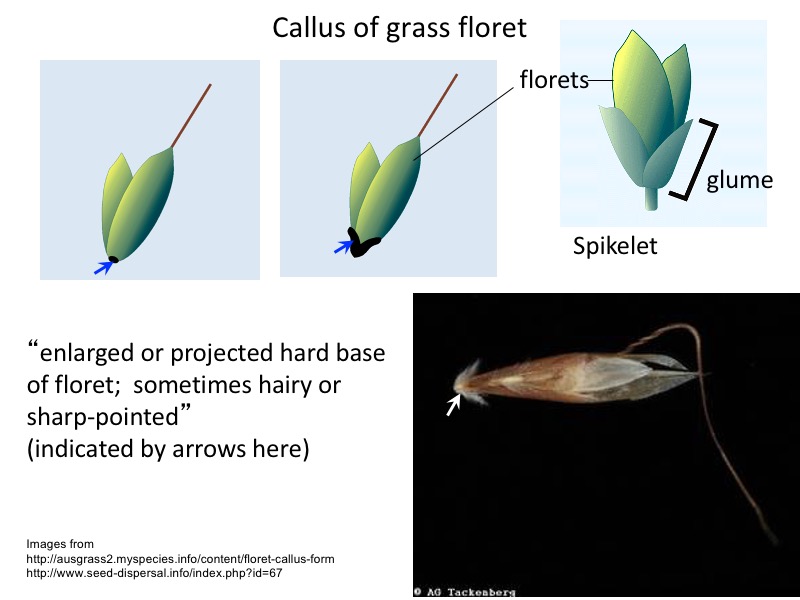Key a plant
This keying exercise will be a guided exercise. The plant you will be identifying will be this one:
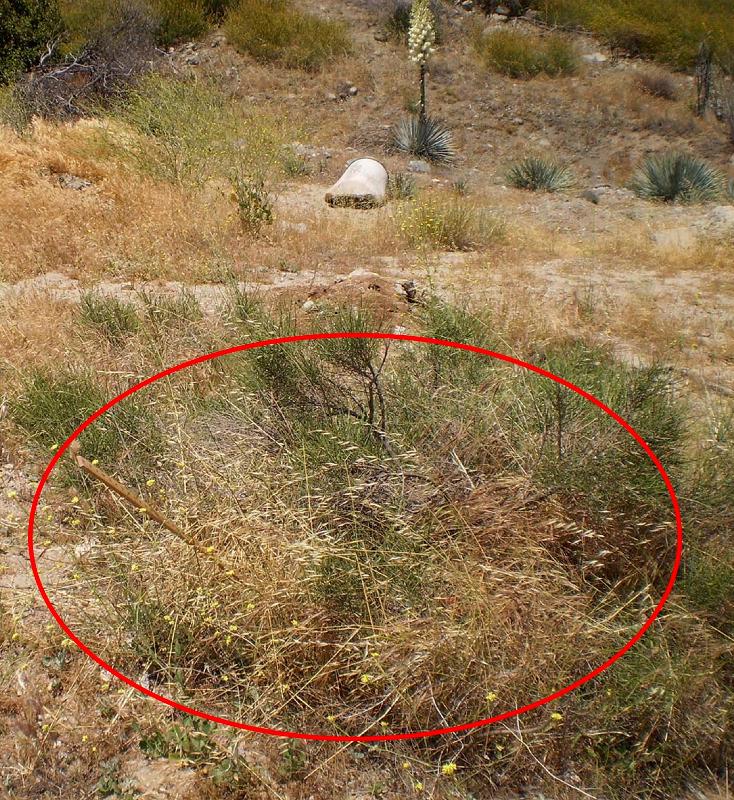
These plants were growing at an elevation of 3800 feet in chaparral in the San Gabriel Mountains. One was collected on May 30, 2020.
Links to images of the plant are given below. They will open in new windows or tabs and can be enlarged.
Spikelets at different stages of maturity on plant
Spikelets at different stages of maturity (detached)
Leaf - collar region (adaxial view with possible damage)
Identify growth form
Look at the "Plant" photo (link above) and identify the plant's growth form and/or life history characteristics:
Identify parts and their characteristics
Note: Higher resolution images of these photos are linked above, if you need to see them.

Here is another view of spikelets at different stages of maturity:
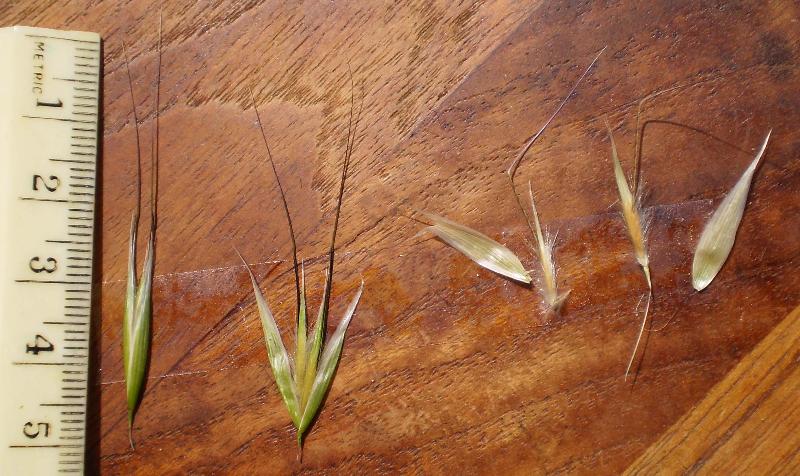
Answer two more questions, then we will run through the key.
Run through the key
Now you are ready to begin working through the key. You already know that this plant is in the Poaceae. In real life, you could go straight to the key to genera in the Poaceae. For practice, though, start at the Key to Families in the Jepson eFlora.
The Poaceae is a very large and variable family. Different species will have characteristics that lead you through the key in different directions. When you got to Asteraceae, you saw:
POACEAE {G2,5,6,8}
The "{G2,5,6,8}" means that "Poaceae" also appears in the keys for Groups 2, 5, 6, and 8 in the Key to Families.
Moving on to the Key to genera in the Poaceae ("Key to Poaceae"), you find that this is a very large key with groups (subkeys).
For this key you will need more information. We will go through it step-by-step with occasional illustrations.
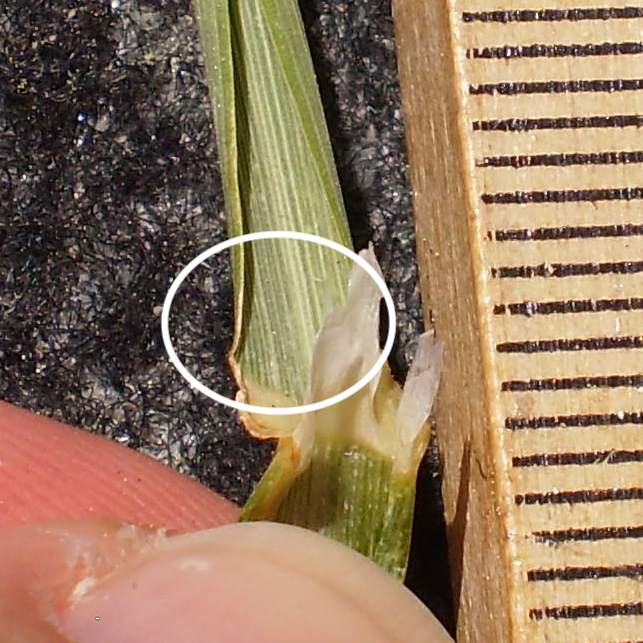
The next choice asks you if "Spikelets [are] enclosed in a bristly to spiny, bur-like involcre". To answer that one, it might help to know what a "bristly to spiny, bur-like involucre" looks like. Fortunately, there is only one genus in this key that has such an involucre (Cenchrus). You can look at images of the involcre of Cenchrus that have been uploaded to the Jepson eFlora by following this link.
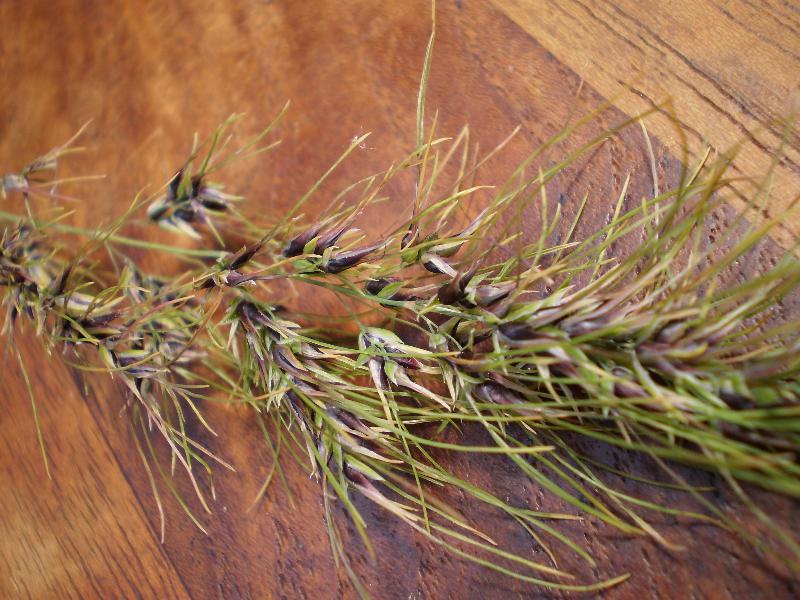
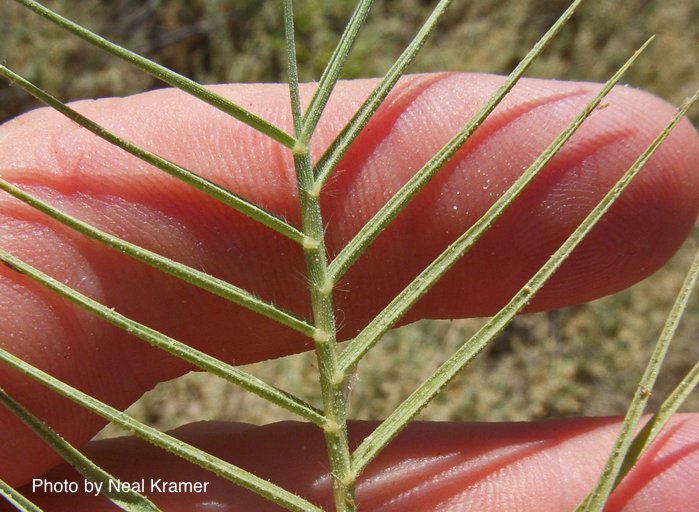
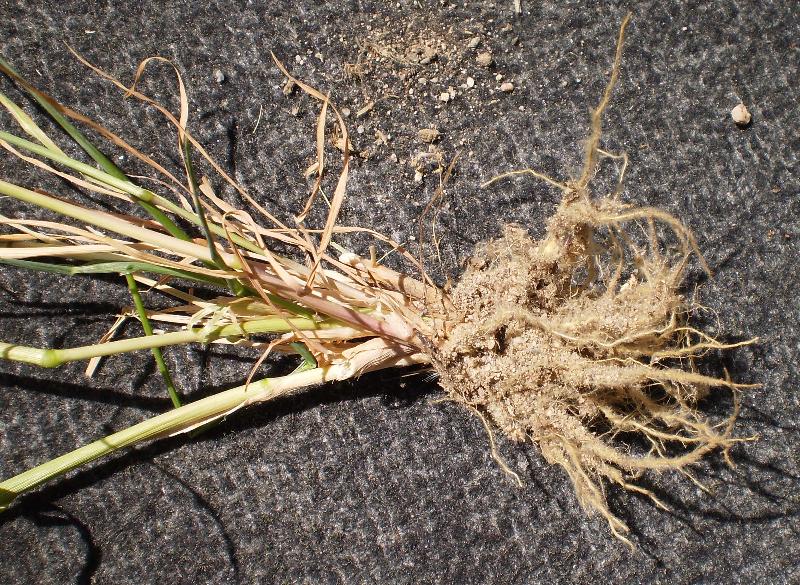
...AND HERE WE GET TO AN APPARENT ERROR IN THE KEY. It happens. Those hairs on the lemma body look very long to me. Choose 26'
...and this is taking too long, so go to Group 6 in the key to genera in the Poaceae
And in the key to species in this genus, you will need to know what a callus is.
From the Jepson eFlora glossary, a callus is "In some Poaceae, enlarged or projected hard base of floret; sometimes hairy or sharp-pointed."
